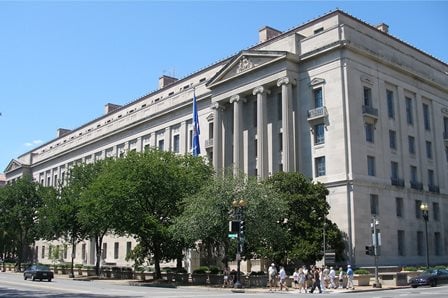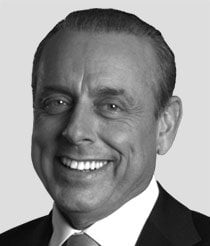Two things hit my radar last week, and they're both interesting, for different reasons.
On the surface, you might think they're not connected, but they might be.
First of all there's Bank of America Corp. (NYSE: BAC). That poor wee bank was Too Big to Fail (TBTF) even before it bought Countrywide (ground zero for the mortgage crisis) and Merrill Lynch (which was itself TBTF).

And now BAC is in tentative talks with the U.S. Department of Justice (aka the Obama Mafioso Collection Agency) to pay between $16 billion to $17 billion for its part in selling shoddy mortgages, or originating them, or packaging them, or being a TBTF bank that wasn't allowed to fail but now has to pay the piper.
Today, I'm going to tell you the story behind the story on this. And I'm even going to give you a stock pick...
Welcome to the Moronicracy of BAC
It's ironic (or maybe the better word is moronic) that BAC bought Countrywide because it thought the mortgage crisis was a chance to add to its mortgage-origination business.
But it's not ironic (and definitely not moronic) that BAC bought Merrill Lynch, partly because the U.S. Treasury Department begged it to, so we wouldn't have another Lehman Brothers moment. I'm talking the kind of moment that would have been Lehman Squared.
Because what looked moronic at the time - especially on account of having to pay God-only-knows how many billions of dollars in fines, settlement deals, shareholder suits, and litigation costs - turns out to be anything but moronic after all.
How come the Countrywide and Merrill deals weren't moronic, you ask? Because BAC can easily pay all the "associated costs" of the two acquisitions... thanks to the two acquisitions.
Oh, and as BAC nears its deal to probably, maybe, put most of these "legacy" mortgage issues behind it, at least the biggest ones, BAC announced that it's raising its dividend. You know, as a way to thank shareholders for their equity.
OK, maybe BAC is raising its dividend to attract more equity stakeholders. Either way, the point is the bank is flush after almost being flushed down the toilet itself.
And for that reader of Wall Street Insights & Indictments who pretty much said, "Shut up and give us some stock picks" - and for the rest of you, too - I say this:
Now is a good time to buy some BAC stock.
Yep, I say buy BAC stock here, buy more if it drops to $14, and load up the boat if, for whatever reason, it drops to $13. It's way too big to fail - and it won't.
I actually like Wells Fargo & Co. (NYSE: WFC) better, but it's a little expensive dollar-wise at almost $50 bucks a share (though it's actually cheaper price/earnings multiple-wise).
Driveway Drive-By
The other thing on my radar today also involves the DOJ and subprime loans.
Preet Bharara, the U.S. Attorney for the Southern District of New York, subpoenaed General Motors Financial. He wants documents related to subprime auto loans that GM finances and packages into securities.
Someone apparently smells a rat in the subprime auto loan origination, securitization, and dump-on-investors hot potato game. Is there fraud going on there? Maybe.
But that's not what's interesting to me. It's uninteresting to me because cars aren't homes.
As big as the subprime auto loan business has become - even if there's some monumental level of underperforming loans or nonperformance (meaning people keep their cars and just don't pay) - the "foreclosure" process just isn't the same.
Lenders send a tow truck and take the car back. Increasingly, the cars are fitted with location devices and turn-off switches so lenders can easily recover them. So, I'm not inclined to think burned investors in subprime auto loans are going to panic out of their securities and cause the Greater Recession.
I'm more interested in the "nuances" of what the DOJ is after.
Is this a consumer protection thing? Is this an investor protection thing? Or is this another wrap them on the knuckles, threaten to sue them, and "collect" more money from them because there may be more easy money out there to go after thing?
What this auto loan expedition could be - and this is interesting - is that the DOJ could, yet again, be using the Financial Institutions Reform, Recovery, and Enforcement Act of 1989 (aka FIRREA) to see if auto lenders are committing fraud against any federally insured institutions. That, after all, is what FIRREA is all about.
What's interesting about that, you ask? It's the irony thing. The DOJ can use FIRREA to go after fraud on a federally insured financial institution if the fraud is caused by the same federally insured financial institution being affected by it. How's that for interesting?
General Motors Financial isn't a federally insured institution. It was formerly a subprime lender known as AmeriCredit, which GM bought in 2010. As of now, it is the only subprime auto player that admits to being subpoenaed. There may well be others.
Ally Financial Inc. (NYSE: ALLY) just went public, and I hope you didn't buy it, because it's trading below its IPO price and I warned you about it right here.
Last December, Ally settled for $98 million by not admitting or denying it ripped off minority subprime auto buyers by arbitrarily jacking up its total loan costs, for the pure profit of it.
Is that what the DOJ is after here?
No one knows - and that's what makes it so interesting.
In the end, the connection between these BAC and Ally stories may be simple. Maybe the DOJ is extracting money from federally insured financial institutions to help pay the federal deficit.
After all, only the Feds can act as enforcer of last resort.
More from Shah Gilani: A recent report from the U.S. Government Accountability Office says the subsidy that "Too Big to Fail" banks enjoyed during the financial crisis is over. Don't listen to a word the GAO says - here's why Too Big to Fail is bigger than ever.
About the Author
Shah Gilani boasts a financial pedigree unlike any other. He ran his first hedge fund in 1982 from his seat on the floor of the Chicago Board of Options Exchange. When options on the Standard & Poor's 100 began trading on March 11, 1983, Shah worked in "the pit" as a market maker.
The work he did laid the foundation for what would later become the VIX - to this day one of the most widely used indicators worldwide. After leaving Chicago to run the futures and options division of the British banking giant Lloyd's TSB, Shah moved up to Roosevelt & Cross Inc., an old-line New York boutique firm. There he originated and ran a packaged fixed-income trading desk, and established that company's "listed" and OTC trading desks.
Shah founded a second hedge fund in 1999, which he ran until 2003.
Shah's vast network of contacts includes the biggest players on Wall Street and in international finance. These contacts give him the real story - when others only get what the investment banks want them to see.
Today, as editor of Hyperdrive Portfolio, Shah presents his legion of subscribers with massive profit opportunities that result from paradigm shifts in the way we work, play, and live.
Shah is a frequent guest on CNBC, Forbes, and MarketWatch, and you can catch him every week on Fox Business's Varney & Co.



